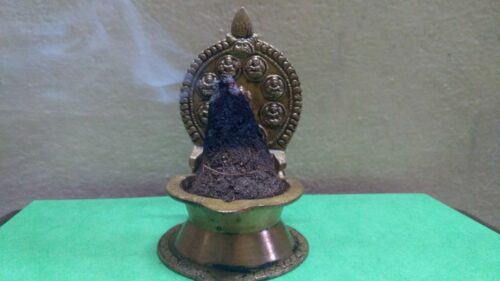Inspired by Grandma, I Make Incense Cones From Kitchen Waste in 5 Easy Steps
Hyderabad's Padmini Rangarajan is tacking the problem of kitchen waste by reusing it to make incense cones at home, which are both low cost and eco-friendly. She shares how you can make them yourself.

Padmini Rangarajan is an educational puppeteer. With her little doll friends, she weaves stories around issues of plastic use, waste management, and eco-conscious living.
During a particular performance, she was asked about the extent of her own environment-friendly lifestyle. “I make my puppets by upcycling waste like plastic bottles and coconut shells. But is that enough? One day after a show, a child asked me how much I was practising what I was preaching. That was when it struck me — I needed to do more,” she reflects.
Since then, the passionate eco-warrior has worked towards minimising the kitchen waste that reaches the landfills of her city, Hyderabad, through ways of composting and recycling.
A colossal amount of food is dumped in the garbage on a daily basis. In India, a single person alone generates 50 kg of such waste annually. Padmini believes that instead of waiting for large-scale policies to come into effect and sweep cities clean, citizens can begin tackling the problem one step at a time within their own homes.
To promote this culture, she recently began reusing the waste generated in her own kitchen, as well as in four neighbouring households, to make zero-waste incense cones at home.

She says, “A friend in Sri Lanka shared that she was making a plethora of homemade products such as creams and kumkum powder. That was where I found my inspiration. Moreover, my grandmother used to burn coconut shells used in religious offerings to make incense powder and coconut charcoal during religious festivals. So I began conducting research to take that idea further.”
Speaking with The Better India, Padmini shares five easy steps to make incense cones from kitchen waste at home:
- Begin by collecting all your kitchen waste. This could be anything, from an assorted mix of stocks and peels to wasted flowers left over after religious rituals. “I reuse the bags that flour is usually sold in to collect this waste. This way, there is no need to buy new containers from the market,” Padmini says.
- This waste is to be left in the open for three to four days until it dries completely. During the drying process, she advises overturning the heap every now and then to check for the growth of fungus and ensure that the raw material has completely dried out.
- Upon drying, churn the material in a blender until it reaches a powdered form.
- Next comes the concoction. “In three spoons of the dried powder, add three spoons of sawdust and three spoons of coconut husk, along with a few drops of coconut oil,” she says. These materials are flammable in nature and make the incense ignitable. “Whenever there is construction in my immediate vicinity, I use the timber shavings in my project. This is waste that usually reaches the garbage dumps if not reused.”Padmini has also tried and tested the optional idea of using essential oils or a spoon of organic frankincense for aroma.
- Upon mixing with your hands, the mixture attains a dough-like consistency bound by the coconut oil. Your cones are thus ready to be shaped into a desirable size as per need.
Taking less than a minute to ignite, a 6 cm cone goes on to burn for two hours on average. Padmini excitedly told us that her incense cone made from dried rose petals went on to fill her entire house with the aroma of flowers.
Commercially available incense cones use chemicals that are harmful to the body as well as the environment. Through this method, Padmini hopes to eliminate their use in daily religious practices that are followed in almost every household of the country.
This waste management technique recently bagged the woman entrepreneur the Swachhta Saarthi Fellowship under the government’s Waste to Wealth Mission. Under this fellowship, innovators like Padmini are provided with the space and opportunity to develop waste management ideas into economically viable projects.
Padmini notes, “Hopefully, upon progress, I will be able to take this project to the underprivileged women under an SHG system to promote sustainable livelihood options along with eco-conscious living.”
Edited by Divya Sethu
If you found our stories insightful, informative, or even just enjoyable, we invite you to consider making a voluntary payment to support the work we do at The Better India. Your contribution helps us continue producing quality content that educates, inspires, and drives positive change.
Choose one of the payment options below for your contribution-
By paying for the stories you value, you directly contribute to sustaining our efforts focused on making a difference in the world. Together, let’s ensure that impactful stories continue to be told and shared, enriching lives and communities alike.
Thank you for your support. Here are some frequently asked questions you might find helpful to know why you are contributing?


This story made me
-
97
-
121
-
89
-
167











